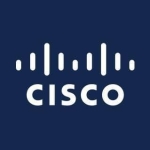What is our primary use case?
NG Firewalls form the edge between customers' networks and the internet. They often provide load balancing to multiple internet providers. In most cases, people use NG Firewalls for more than just a basic firewall function.
The intrusion detection and prevention feature is usually the most significant piece that people want because it provides layers of protection against malware, ransomware, and things of that nature.
How has it helped my organization?
My colleague likes to tell our clients that none of his customers who installed a Palo Alto have ever had a ransomware attack. I'm always nervous when he says that because things change so fast. However, it gives people peace of mind that they're protected at the network's edge.
The firewall is going to do everything possible to protect resources and data. We have customers with social security numbers, HIPAA data, and other sensitive customer information. Other products don't seem to provide the same level of protection and leave customers open to malware or ransomware attacks.
Palo Alto has many features to protect against data leakage and unauthorized downloads, so it can do quite a lot to protect a network against any attack. The leadership at our client companies feel reassured that they've done what they can with the best solution out there to protect themselves.
Smart people always do stupid things, like clicking on something they shouldn't. They often realize their mistake five minutes or five seconds after doing it. We've seen what these mistakes can quickly do to an organization. Palo Alto's features help you prevent those types of things from happening. You can immediately block suspicious file downloads and push those up to Palo Alto to investigate. You can get ahead of the problem and help other folks who might not have seen that attack.
NG Firewalls provide a unified platform that natively integrates all security capabilities. Having all those features in one platform at the edge is essential. That's a massive component of the customers' overall security structure. It isn't everything, but it protects the edge of the network.
It does not prevent someone from getting their company laptop infected at home and infecting the network when they come to the office the next day. That's where other pieces come into play to make an overall security structure. The firewall is designed to protect everything at the edge and has everything you need to do that. It protects you at the edges and provides reports that give people information about what's happening on the network at a given time and date.
NG Firewalls take care of any holes in the client's network and reduces the number of security tools needed. A decade ago, deploying these types of tools required multiple devices, whether that was Barracuda email, firewall, and an intrusion detection platform. Generally, people had antivirus and anti-spyware systems running in their enterprises. All of that is now integrated into the Palo Alto Firewall platform.
The antivirus and anti-spyware features are as good as anything out there. It's updated constantly, so any novel threats are automatically detected. On top of all these features, it provides a solid edge platform that incorporates all of the security features necessary in that edge component.
What is most valuable?
One of the simple features I like about Palo Alto firewalls is that it's extremely easy to find out what's happening in the network. The reporting is phenomenal, and it's easy to find which threats have been detected and what traffic is going through the box. When a customer notices something is wrong, you can quickly check the amount of traffic going through the firewall around that time. If there is anything out of the ordinary, you can decide it needs to be investigated further.
I talk to customers a lot about simple aspects. Palo Alto firewalls have vast technical capabilities in the signature database, which is constantly updated. Palo Alto does a lot of work to find threats in the wild, which is rare among vendors. From a practical and operational standpoint, the ability to see what's happening at any time, live or historically, is a huge benefit compared to other firewalls that are out there.
Machine learning is a massive part of it. Threats are always evolving, and they can constantly update the signatures they're hunting and the raw data streams they're looking for outside of something that's been defined as a true signature type of attack.
Most of my customers use what Palo Alto refers to as the Wildfire functionality. Their online analysis team checks every 15 minutes to find anything new that has been detected in the wild anywhere in the world. Once their team finds something, they immediately disseminate that information down to the firewalls so they can start looking for something new. That includes anything that has evolved from one version of an attack to another. So far, we have not run into any issues with changing attacks creating problems for customers with a Palo Alto firewall in place.
It's rare for our customers to use the zero-day intelligence feature to upload information to Palo Alto. Still, receiving anything from Palo Alto that others have detected out in the wild is beneficial. Any zero-day signature people find in a data stream can be pushed down to the firewalls, and it's a huge benefit to know that the firewall can stay on top of the changes in the attack world.
The PA 400 series is excellent. It's the product that they were missing. Years ago, there was a Palo Alto 200 and a Palo Alto 500. The 500 was a relatively low-cost platform that focused more on team-sized businesses. It reached the end of its life, and they replaced it with an 800, a similar form factor but quite a bit more expensive. The 200 was replaced with a 220, which was at the low end cost-wise in the product family, but they never had anything in the middle.
They didn't have something that offered high performance at a reasonable cost. The 400s provide that missing link inside their product family to cater to small and medium-sized businesses. Because more and more, even though companies are small, with 50 to 100 people in a company, internet bandwidth has gotten so cheap that they're typically running 1+ gigabit-per-second connections out to the internet.
While they may not be using that much bandwidth today, that will change as they do more and more online. We saw during the pandemic how that could change quickly. Suddenly, everybody's working from home, and internet connectivity is the company's lifeblood. The 400 series gives customers decent performance at a lower price point in a small form factor. It's a product they can deploy, knowing it will protect them and provide the performance they need for years.
What needs improvement?
The reporting and visibility are phenomenal, but you don't get that information out of the box. They can email reports regularly, and the functionality is all there. However, a lot of it is based on an older model for email, where customers have in-house email servers. The small and medium-sized business customers I deal with are moving toward Office 365 or some other cloud-based mail and not maintaining their own internal mail servers.
Palo Alto is developing that, and I need to understand how they integrate with an Office 365-type mail environment. The next piece is figuring out how to get that information to the people who need it without somebody physically sitting in front of the screen or going to the firewall to have it delivered to them regularly. The capability is there, but it's primarily based on an older email architecture that customers rarely use anymore.
For how long have I used the solution?
I'm an integrator who has been doing professional services with Palo Alto installations for at least eight years.
What do I think about the stability of the solution?
Palo Alto firewalls are solid. I can recall that we haven't had platform failures or product issues with the Palo Alto Firewalls. Everything can have a power supply failure. We have seen that occasionally, but it's rare. In eight years, we've had to replace power supplies in two firewalls out of hundreds we've deployed. It's a physically stable platform, and the software is also solid. I typically avoid the most recent software versions until they reach what I consider mature and seasoned.
We've seldom had issues with performance. I always tell people that internet bandwidth will be bigger and cheaper in the future, so firewalls need to keep pace from a performance standpoint. Palo Alto has done a decent job of bringing out new models with higher throughput levels while maintaining all the threat-driven functions. But we constantly need to evaluate where we are with internet bandwidth and where we expect to be in the future.
We tell people that the physical hardware platform they choose will protect them today, no matter which one. However, the choice will determine how long that can stay in your network. It ultimately comes down to pure bandwidth. As we move towards the cloud, more and more internet bandwidth becomes critical. Multiple internet providers are now essential on most of our customers' networks. The raw bandwidth and performance through the box must keep up with that. Palo Alto's newer platforms have multiple-gigabit throughput, and I assume they'll continue with that as they evolve the product line further.
What do I think about the scalability of the solution?
Their product line includes sizeable chassis-based firewall systems that can do multiple virtual firewalls within a single platform. Even their middle-tier products have that capability. Some of our customers have numerous divisions that need separation between departments, so those scalable features come in handy. Most are organizations with one or two firewalls per site. Still, I've worked with large enterprises that had tens or hundreds of firewalls in their overall environment to maintain a separation between departments and to separate users from servers.
Palo Alto also has a product called Panorama that lets you centralize the configurations of vast numbers of firewalls. It acts as a central point for changing firewall settings, and you can push the changes out to a subset of firewalls in your environment or all of them. The bottom line is that Palo Alto can scale up NG firewalls to massive numbers of platforms.
How are customer service and support?
I rate Palo Alto support eight out of 10.
How would you rate customer service and support?
How was the initial setup?
NG Firewalls are easy to set up. I've been doing it for a long time, so it's effortless for me to set them up. When registering a firewall with Palo Alto, you can download a Day 1 configuration into the box with many of the standard protection features activated.
I don't use that, but I periodically check it to see if there is something else Palo Alto has determined should be enabled or a feature that should be tuned differently than I typically do. They provide the initial configuration with the critical features activated.
Deployment requires a small team. Sometimes, it's only a person from the customer side and me. Usually, it is me plus one other engineer working on deploying these where we've got changes on switches to support the firewall or adjustments to the DNS systems. A lot of different areas come into play when we change the edge. Frequently, our customers are transitioning from a rudimentary network design to a new design where we're implementing firewall and network segmentation within their environment. That's easy, but we use a team of two or three folks to finish the job as quickly as possible.
What was our ROI?
While all next-generation firewall platforms have some degree of these different components built into them, Palo Alto has rock-solid antivirus, anti-spyware, threat prevention, data leakage prevention, and file blocking, plus all of the typical functions that a firewall does. It does all of these functions exceptionally well in addition to regular firewall aspects like blocking DDoS attacks and generic types of attacks. It tends to be more expensive than most competing platforms, but the return on investment is huge. I'm almost to the point of saying that I won't support any other firewall platforms out there.
There are several new firewall models that have come along, but I tell people that Palo Alto will provide all the protection you could need. There's no reason to look at anything else out there because most other platforms don't provide the same level of protection. The value proposition to customers is the peace of knowing they've got the best protection at the edge they can buy.
What's my experience with pricing, setup cost, and licensing?
The licensing model is becoming more and more typical of vendors. There are several different licenses that we usually provide with the firewalls. DNS security is a newer one, and we're considering the types of customers who might benefit from that.
The cost of the license is platform-dependent. It would be nice if they standardized that across the board to make the license a flat fee instead of based on scale and the platform you're using. Functionality shouldn't change based on the platform or the amount of data going through it. It's the same functionality on there. That's one aspect customers often raise. The platform's price is what it is, but the ongoing cost of the annual license is hard for some customers to wrap their heads around.
Which other solutions did I evaluate?
Many people are just looking for the cheapest, fastest firewall, and my answer is always the same. It's a cliche to say you get what you pay for, but when you opt for the cheapest product, you have to understand that the costs of an attack are monumental. We had a customer who deployed SonicWall firewalls because they wanted something inexpensive that provides a basic level of functionality. They have spent three weeks trying to recover from a ransomware attack because the firewall didn't prevent them from downloading files into their environment, and it lacked some of the features a Palo Alto firewall has.
I tend to use examples like that. It's like switches. When everything's working great, you can go to the local store and buy yourself a cheap and expensive switch, and it'll be fine. But when there are problems, how do you recover? And what can you do with the firewall that will protect you against attacks you don't anticipate? That's where Palo Alto shines. You know you are protected when you deploy it.
Other products are less expensive because they don't provide the same level of functionality. They'll talk about threat prevention, anti-spyware, and malware functions, but they have not been updated automatically like Palo Alto and they lack zero-day functionality. Maybe they don't have some other components, like data leakage protection or file download protections to thwart a concerted attack against organizations.
I always ask people what it would cost to shut down their business for several days. This customer had a solid backup strategy for their servers at least, enabling them to start using cloud-based versions of all their servers within three days. They still were out of business for three days. Now that we've put Palo Alto firewalls in place, they feel confident that's not going to happen again.
I get nervous when people say it can't happen, but we haven't seen it happen with the Palo Alto firewall with the capabilities and features we enable on these boxes. When people say they don't want to spend that money, they need to consider it as something protecting their entire business. An internet connection isn't a nice-to-have; it's the lifeblood of their business, being protected by the firewalls.
What other advice do I have?
I rate Palo Alto NG Firewalls 10 out of 10. People who are only starting with these firewalls should rely on the technical notes and briefs Palo Alto provides on functionality. I started using Palo Alto firewalls years ago, and we deployed firewalls the way we knew how. Later, I worked with another integrator who had been doing it for about two or three years more than I had. He was configuring areas on the firewalls that I had never considered. That becomes the critical piece; turning a firewall up based on what another firewall vendor does is enough to get you the same level of functionality that the other vendors provide.
But with the additional capabilities that Palo Alto includes in the firewalls, it's imperative to have all the different pieces activated as much as the customer can accommodate in their environment. And that's a critical piece that Palo Alto provides a lot of online resources, and there are a lot of technical notes that are out there on what needs to be enabled in addition to that Day 1 configuration. That can give you a big headstart on all the different areas that need to be enabled within the firewall.
Which deployment model are you using for this solution?
On-premises
Disclosure: My company has a business relationship with this vendor other than being a customer. partner




















